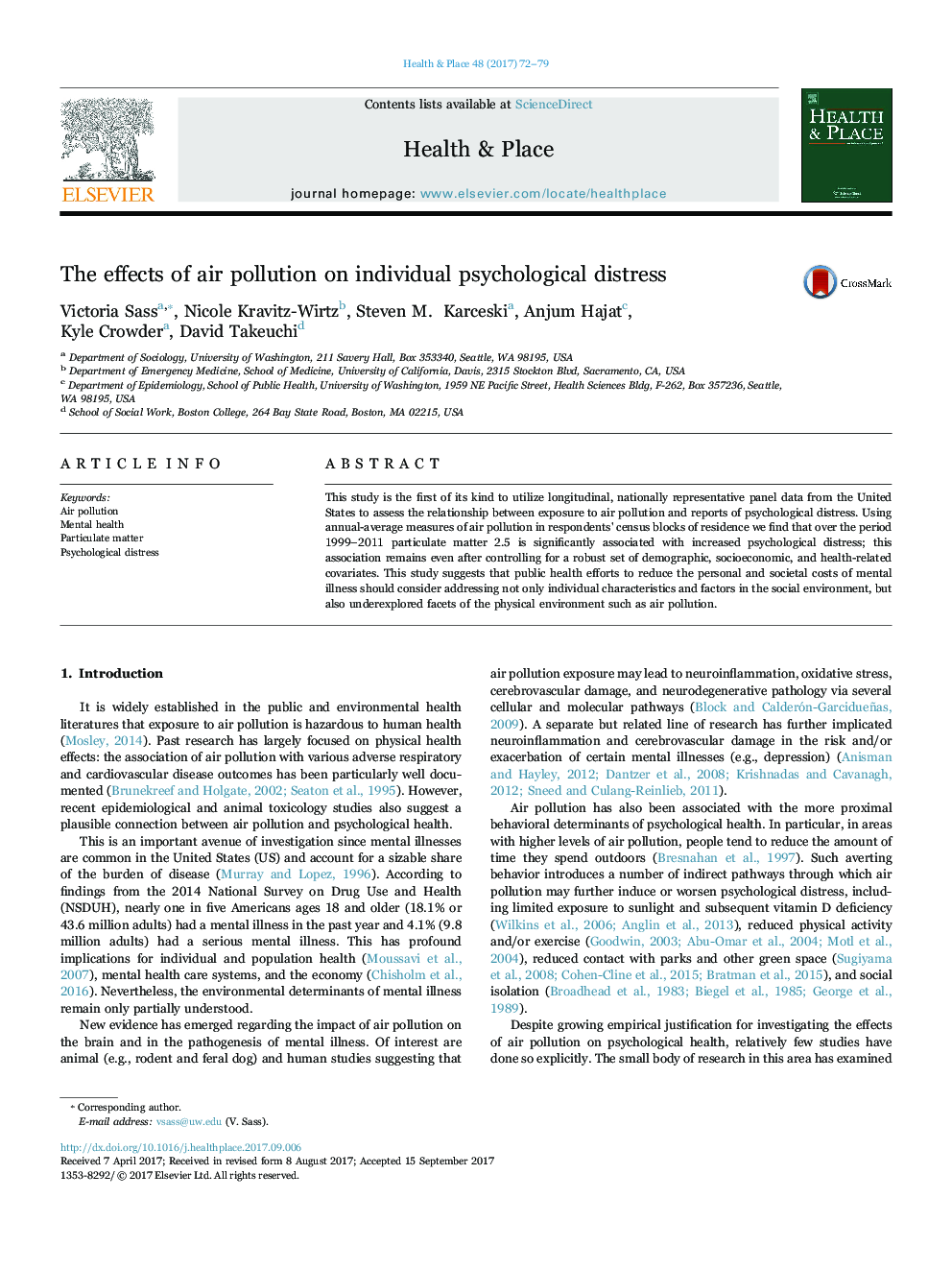| Article ID | Journal | Published Year | Pages | File Type |
|---|---|---|---|---|
| 5114744 | Health & Place | 2017 | 8 Pages |
Abstract
This study is the first of its kind to utilize longitudinal, nationally representative panel data from the United States to assess the relationship between exposure to air pollution and reports of psychological distress. Using annual-average measures of air pollution in respondents' census blocks of residence we find that over the period 1999-2011 particulate matter 2.5 is significantly associated with increased psychological distress; this association remains even after controlling for a robust set of demographic, socioeconomic, and health-related covariates. This study suggests that public health efforts to reduce the personal and societal costs of mental illness should consider addressing not only individual characteristics and factors in the social environment, but also underexplored facets of the physical environment such as air pollution.
Related Topics
Health Sciences
Medicine and Dentistry
Public Health and Health Policy
Authors
Victoria Sass, Nicole Kravitz-Wirtz, Steven M. Karceski, Anjum Hajat, Kyle Crowder, David Takeuchi,
